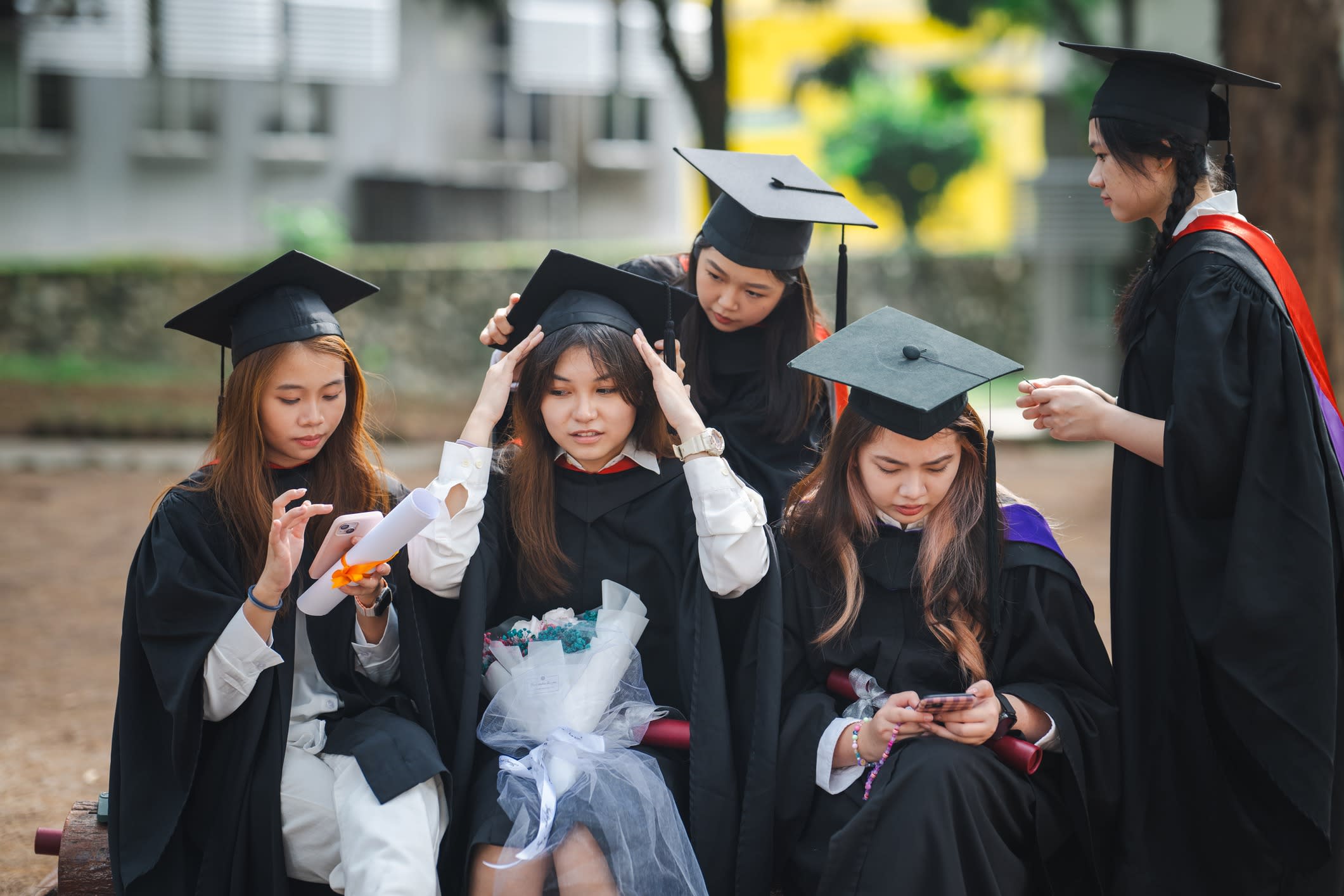Australia’s international student caps: What do they mean for Chinese students?
Early this year, my uncle joyfully posted his daughter’s acceptance letter from one of Australia’s prestigious Group of Eight (Go8) universities on his social media moments. I responded with a thumbs-up and warm congratulations.
As an academic, I can already imagine the excellent education she will likely receive here in Australia. To put it in perspective, the Go8 is Australia’s equivalent to America’s Ivy League, Britain’s Russell Group, or China’s C9 League.
However, Canberra has cast a shadow over the thriving international education sector by proposing caps on international student numbers, despite the sector being valued at more than $45 billion annually. On Tuesday, 27 August federal Education Minister Jason Clare announced that the government wanted to cap international student numbers at 270,000 for 2025. He said the cap would mean a limit of 145,000 new starters for publicly funded universities, about 95,000 for vocational colleges, and 30,000 for non-university higher education providers.

Federal politicians from major parties in Canberra first proposed the legislation in May, sparking a heated debate across Australia that continues to intensify. Alongside this, the legislation aims to contribute to a cut in migration.
Officially, this measure is also intended to ease national housing pressures by reducing migration. Yet, the housing crisis has been unfairly and almost entirely blamed on migrants, especially international students, despite the complex realities at play.
The decision will alter the academic and professional trajectories of many, particularly Chinese, students who constitute a significant portion of the international student body in Australia.
Slashing international student numbers won’t solve the housing crisis. They represent just 4% of the rental market, but contribute over $48 billion to our economy. We can't afford to jeopardise our second-largest export.#IntlEducationMatters #auspol #highered pic.twitter.com/xTckoe76oM
— Universities Australia (@uniaus) August 6, 2024
But what does this new cap mean for Chinese students?
The answer is straightforward, and the numbers tell the story. Chinese students have consistently formed the largest group of international students in Australia. Over the past two decades, their numbers have more than tripled, making up about a quarter of all international students, roughly 150,000.
They’re followed by students from India and, to a lesser extent, Nepal, the Philippines, and Vietnam. Consequently, any changes in immigration policies will directly and significantly affect Chinese students.

So, what are the specific implications of this legislation for Chinese students? The impact is complex and can be considered across three dimensions, both in the short and long term.
Firstly, in the short term, the cap will introduce considerable uncertainty for Chinese and other international students planning to study in Australia. Some news outlets and study-abroad agencies in China have already picked up on the news from down under, painting a less rosy picture of how Australia is targeting international students to control immigration, making studying in Australia increasingly challenging.
Australia has already tightened student visa regulations, leading to a high rate of rejections and slowing the arrival of new students.
Recently, student visa rejection rates hit a nearly two-decade high. This uncertainty is likely to shape students’ decisions in the long run.
UA is calling on the Albanese Government to revoke Ministerial Direction 107 in light of the significant effect it continues to have across the university sector. @jasonclareMP
— Universities Australia (@uniaus) August 20, 2024
Read our full media release here: https://t.co/JNsToDchHZ#auspol #highered pic.twitter.com/9ifba5jlH8
Secondly, in the long term, Chinese students may choose other comparable English-speaking countries over Australia. Canberra’s recent track record of frequently changing policies – often driven by short-term populist agendas – may push international students to seek more stable options for their studies and wellbeing.
Between 2023 and 2024 alone, we’ve seen significant policy shifts, including adjustments to post-study work periods in 2023, new age caps in 2024, and revised student visa rules in 2024.
As University of Sydney Vice-Chancellor Professor Mark Scott observed:
“If you send a message to international students that they're not welcome, they have many other options.”
Chinese students are well aware of this. Moreover, if Canberra begins to micromanage where international students can study, such as directing them to regional universities, a growing number of prospective Chinese students may shun Australia altogether.
Research has shown that Chinese students place great importance on university rankings. The complexities of steering international students toward less-prestigious regional universities pose as much of a structural problem for Australia’s housing market as they do for the demands of the domestic Chinese job market, which values degrees from world-ranking universities.
Thus, there seems to be little room for compromise in this area, particularly for Chinese students.
Professor Sharon Pickering, Vice-Chancellor and President of Monash University, is right in asserting that:
“One policy that simply won’t work is trying to shift student enrolments from highly-ranked universities to others. International students typically choose their type of course and university first, and their country second.”
I would like to add another dimension to this. When students decide to study abroad, they don’t just put all their eggs in one basket; in many cases, they apply to several universities across different countries. For both students and their parents, it can be a once-in-a-lifetime choice.
I say this from the perspective of a former international student and as someone who has observed this process first-hand through my niece's experience.
Ultimately, both students and their parents want to have a range of options to choose from, rather than just being chosen. Therefore, it’s important to recognise that this is a two-way conversation, rather than one dictated solely by government policies.
Thirdly, in the long run, people-to-people connections between China and Australia are crucial. Chinese students contribute to the educational and cultural diversity of Australia, and their experiences help foster mutual understanding and respect between the two countries. As the federal Minister for Education, Jason Clare, remarked:
“When a student comes here to study, they don’t just get an education … they fall in love with the place.”
This sentiment particularly resonates with me, given my experiences studying in multiple countries. I still cherish the fond memories of my time studying in South Korea and Japan when I was in my early 20s, and these countries remain my self-proclaimed second homes that I now visit regularly with my family.
Education is Australia’s second biggest export, worth over $48 billion to the economy. Fewer international students puts at risk the 250,000 jobs that rely on them. #IntlEducationMatters #auspol #highered pic.twitter.com/LlNgJVrpk1
— Universities Australia (@uniaus) August 7, 2024
Australia is a major exporter of high-quality international education, just as China is a significant provider of international students. It is essential to nurture the dynamic synergies between these two sectors for the benefit of both countries, rather than yielding to short-term domestic populism.
Minister Clare further emphasised:
“… and when they [international students] go home, they take that love and affection for us back home with them.”
This “love and affection” is as important as the education students receive.
Moreover, as Professor Sharon Pickering added, they become “lifetime ambassadors for Australia” when they return home. I could not agree with this statement more, having witnessed over the past two decades so many international friends studying, working, travelling, and living between their native countries and the countries where they studied abroad.
The story of my uncle’s daughter offers a snapshot of how Chinese parents and students value Australia’s globally recognised education. I hope my sister doesn’t soon ask me whether Australia is still as welcoming as it used to be.
Given the recent and ongoing changes in immigration policies for international students, I can’t confidently assure her that it is. The new development is that her family is now weighing the choices between Australia and the UK.
Indeed, international students often do not have just one university offer from one country; in many cases, they hold multiple offers to choose from.
Canberra should cherish and safeguard its hard-earned reputation as a welcoming destination offering world-class education to international students, rather than undermining it.
It makes sense for Canberra to view this multibillion-dollar service export as a “critical national asset”, but this asset deserves better treatment – ideally free from populist politics – for the greater good of both Australia and its global standing.







